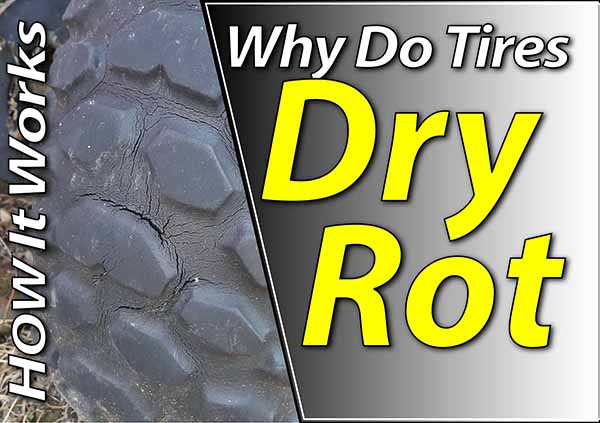
What Is Dry Rot And How Can You Prevent It?
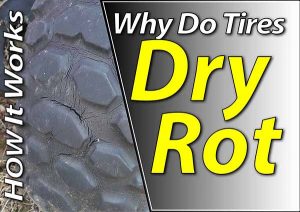
To put it simply, dry rot is when the rubber in your tires starts to decay. You probably don’t need to worry about dry rot if you change your tires frequently, but for hobby riders, weekend warriors, vintage guys, or any rider on a budget, a rotted tire can ruin your weekend.
You Can Get All The Parts And Tools You Need At Amazon.com!
How Can You Tell If The Tires Are Affected By Dry Rot?
If your tire has tiny cracks between the knobs and on the sidewall, it’s already breaking down, and the worse the dry rot gets, the easier it is to spot.
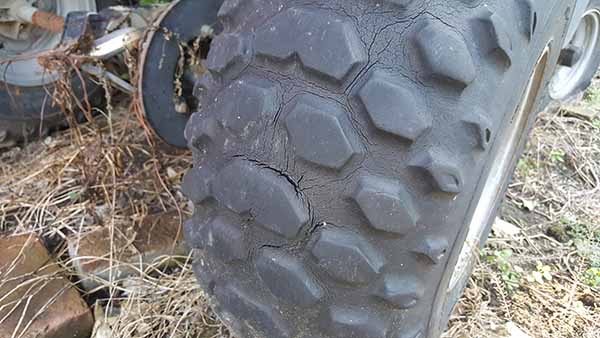
What Causes Dry Rot In Rubber?
Let’s start with the mindset that your tires are like your muscles.
Like your muscles, the rubber is made of connected strands called polymers that work together, and these polymers need to stay strong and healthy to work correctly.
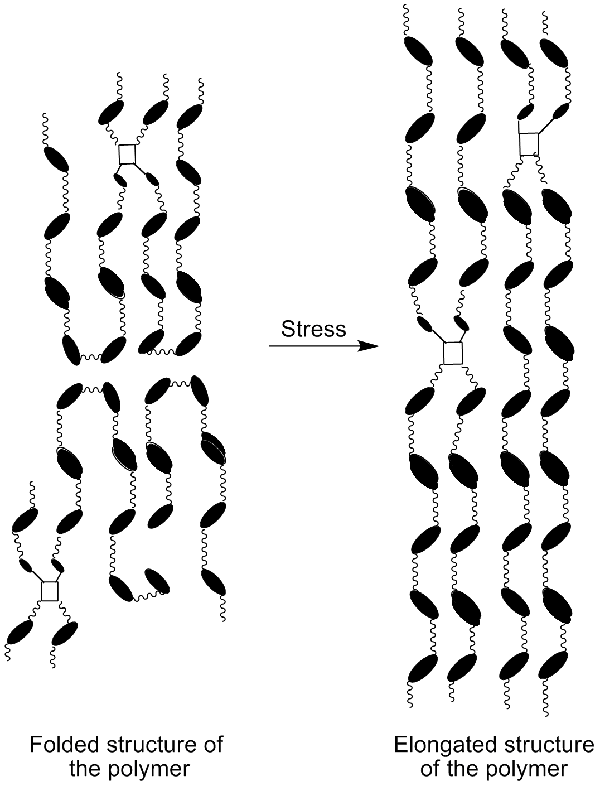
Without getting into how tires dry rot and break down on a molecular level, the following factors have been proven to affect the life of your tires.
- Extreme Temperatures: When rubber is subjected to extreme temperatures, the polymers expand (heat) or constrict (cold) past their point of vulcanization.
- Sunlight (UV Radiation): Ultraviolet radiation causes photodegradation. This will break down almost everything given enough time. The more complex a structure, the quicker it will degrade from UV light. So the polymers in your tires are very susceptible.
- Corrosive Chemicals: Petrochemicals (gasoline, oil, propylene-based antifreeze) and solvents break down the complex structure of tire rubber. Although chemical resistant rubbers exist, they are (probably) not in your tires.
- Moisture: Excess moisture reduces the polymers’ ability to expand and contract. Another effect is a higher operating temperature than designed. This results in the above issue of extreme temperatures.
- Ozone: Ozone is an oxygen-based gas found in the upper atmosphere. But due to pollution, ozone is now commonly found at ground level. When ozone interacts with UV radiation, the polymer bonds in your tire break down. This is called ozonolysis,
- Oxygen: Your tires can rust. OK, not rust, but the same process of oxidation occurs in rubber (and everything else) when molecules lose electrons.
- Time: “Time flies like an arrow; fruit flies like a banana.” – Anthony Oettinger
Related: You need to keep yourself hydrated during the ride, no matter how good you are.
How Can You Prevent Dry Rot?
We can’t do anything about ozone, oxygen and time. We can, however, take steps to avoid extreme temperatures, sunlight (UV rays), corrosive chemicals, and moisture.
Let’s start with storage.
Water, heat, and UV rays break everything down faster, so your garage, shed, trailer, camper, or living room is ideal, basically anywhere that is shaded.
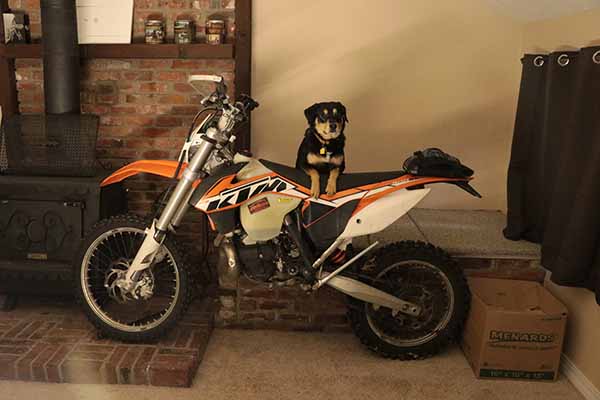
If you store your bike in a structure without a floor, put your bike on a stand, or at least put your tires on blocks.
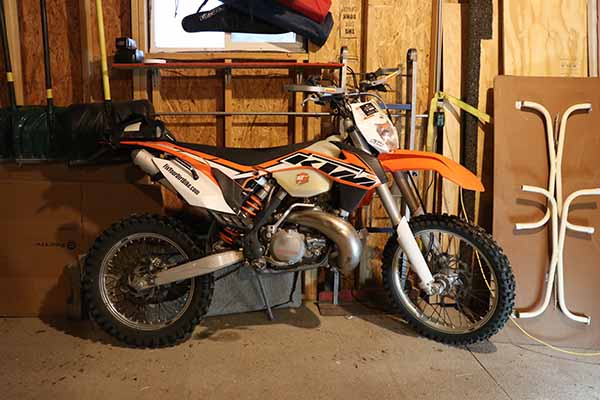
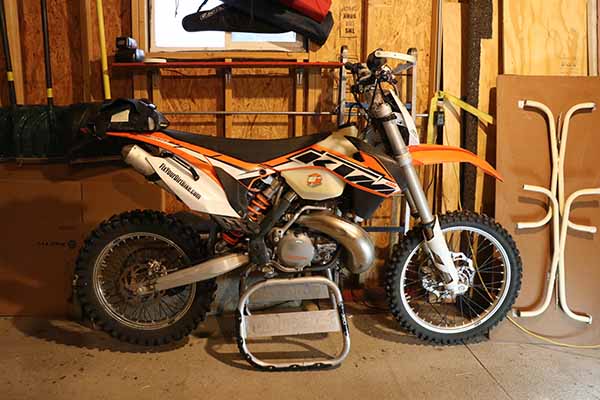
Keep your tires inflated
Proper inflation keeps your tires in the correct shape. When your sidewall is collapsed, all the weight of your bike is on that bulge in the sidewall. When your tire is inflated to spec, it will distribute the weight evenly.
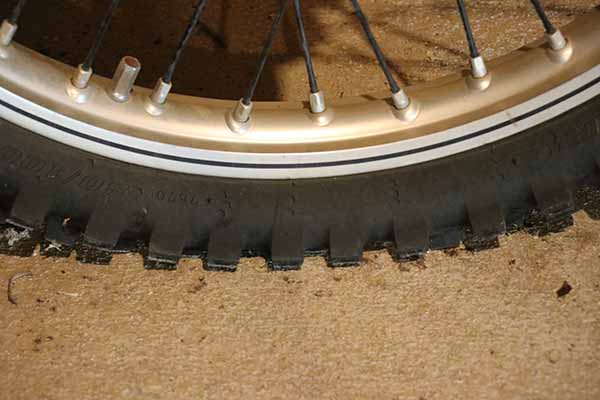
Avoid contact with chemicals
Corrosive chemicals will cause dry rot by destroying rubber in a hurry, so be careful when handling gasoline, parts cleaner, and pretty much any chemical designed to clean, even soap.
If your tire comes into contact with anything besides the ground, rinse it off.
And the best way to prevent dry rot?
Ride Your Bike!
Even if you don’t ride much, get out at least once a month. Ride until your tires are warmed up; this will keep the polymers flexible and healthy.
If you ride a lot and you are storing your bike for the winter, you should be OK.
To recap, the best way to prevent dry rot is to put your bike on a stand in a dark, cool place when you aren’t riding.
Storing your bike on a stand is ideal for long-term storage for several reasons. I get into why in a different article.
What To Do About Dry Rot If It’s Already Started?
If you catch dry rot in the early stages, it is possible to save your tires with water-based rubber conditioners. There are a lot of products to choose from, so here is a link if you want to go shopping.
Can You Ride With Rotted Tires?
Absolutely! You can ride on anything, just don’t be surprised if tires affected by dry rot don’t get you through the weekend. And how long they last depend on the level of decay.
When properly cared for, your tires can last a very long time. Most rubber products last around six years. But as you saw in my tire change guide, I’m still running a tire from 2005!
If you have any questions or anything to add, please leave them in the comments or on our FaceBook page!
Keep Reading – Why I Use Rubber Grease
